#rue victor hugo
Text
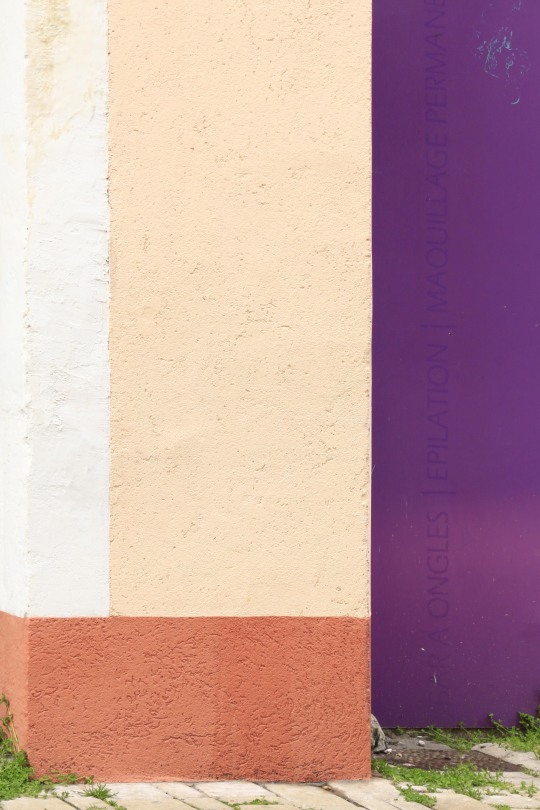
Les couleurs de la ville.
BAR A ONGLES / EPILATION / MAQUILLAGE PERMANENT
#photographie urbaine#urban photography#couleurs urbaines#urban colors#décor urbain#urban decor#abstraction#figuration#mur#wall#minimalisme#minimalism#rue victor hugo#38300#bourgoin jallieu#isère#auvergne rhône alpes#france#photographers on tumblr#poltredlyon#osezlesgaleries#lyonurb#brumpicts#frédéric brumby
42 notes
·
View notes
Photo

Sam Szafran. Escalier 54 rue de Seine. 1990
* * * *
“He who contemplates the depths of Paris is seized with vertigo.
Nothing is more fantastic. Nothing is more tragic.
Nothing is more sublime.”
― Victor Hugo
69 notes
·
View notes
Text

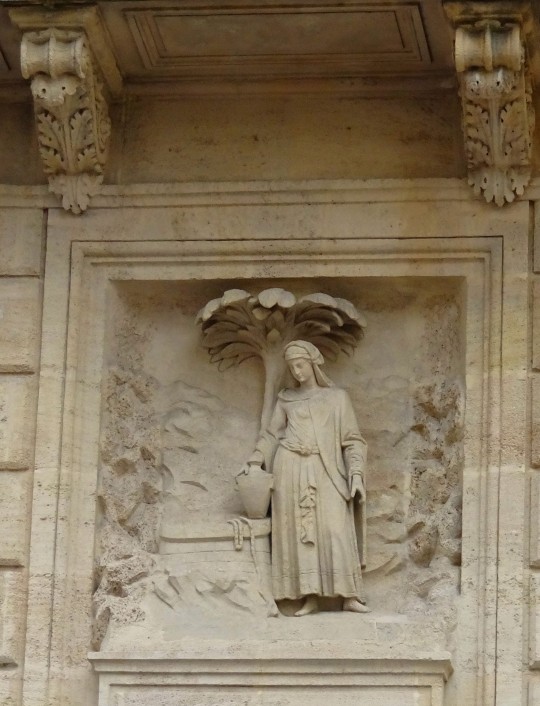
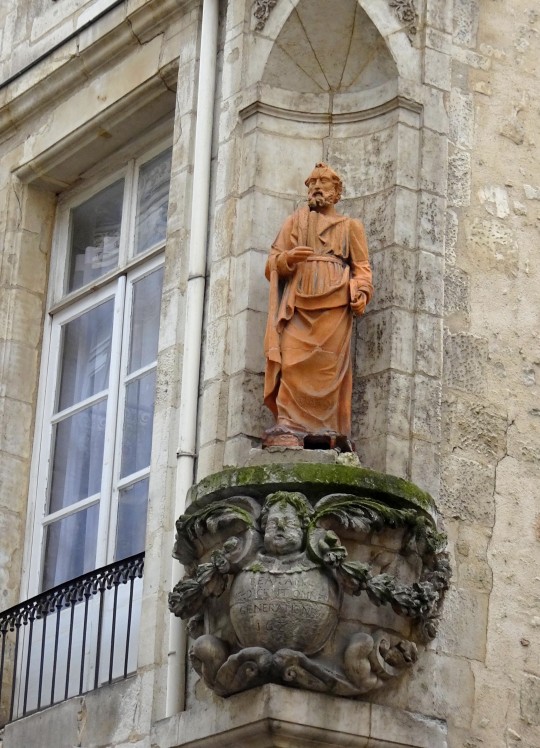
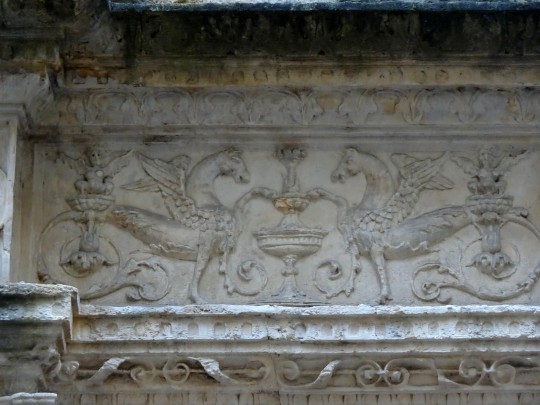

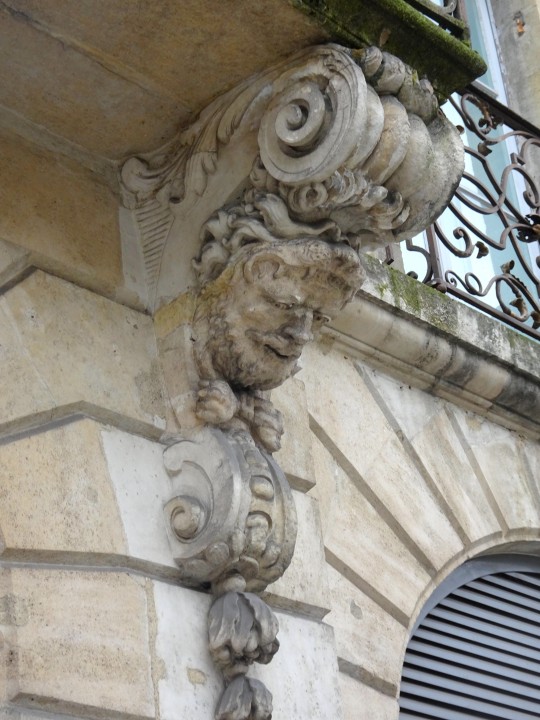

Ca y est ! Je reviens de mon périple dans l'Ouest pour retrouver des ami(e)s lointain(e)s ! Première étape, Isabelle en Gironde, vers Libourne…
Nous passons une journée à Bordeaux.
Une belle grille de porte néo-renaissance rue Maucoudinat, des statues de Samaritaine au puits ou de saint sur un globe rue des Bahutiers, un bas-relief avec hippogriffes et un bel immeuble XIXe s. rue Saint-James et des têtes d'Hercules en soutien de balcon rue Victor Hugo.
#bordeaux#aquitaine#gironde#rue des bahutiers#rue maucoudinat#rue saint-james#cours victor hugo#hercule#atlante#samaritaine#saint#hippogriffe#monstre#renaissance
4 notes
·
View notes
Text

by unofficial
closed
somewhere with Rafa on the rue Victor Hugo
——-
on 04/dec/2022 @ 16h32 this photo was taken to document this Thai restaurant in ste-foy…I have seen the door open maybe 7 times in the past year…I smell no food being cooked when i walk by and i always ignore the place
too bad…Thai cuisine is one of my favorite
supposedly another Thai restaurant is opening on rue de la republic soon. Until that ouverture…Thai food is for sale every Saturday at the street market…obviously there’s a large demographic that loves Thai food…a long queue snakes down the block waiting for their weekly treasures.
20 notes
·
View notes
Text
Les Mis Canon-era Paris Photographs: Jean Valjean and Cosette’s route to escape Javert, in Pictures!

Jean Valjean's escape through Paris is Victor Hugo's way of mourning the Paris he knew from before his exile, the Paris before the modern renovations.
Hugo wrote Les Mis from exile in Guernsey, at the same time as Paris was undergoing a series of massive renovations. The "Old City" of medieval Paris that Hugo loved was being replaced by the “New City" of Baron Haussman. The dark medieval labyrinth lit by oil lamps was being replaced by modern wide streets and standardized architecture lit by gas lamps. Victor Hugo is nostalgic for the Paris he remembers before his exile-- so Jean Valjean is able to escape Javert using things unique to the Old City. He escapes through a labyrinth of tiny medieval streets in a neighborhood Hugo claims was destroyed during the renovations; he climbs over the convent wall using the rope from an oil lamp, the very oil lamps that were being replaced by the more modern gas lanterns. The dark maze hides him from police surveillance in a way modern streets cannot.
A man named Charles Marville photographed Paris shortly before many (though not all) of the renovations occurred. In this post I'll go through all the different streets mentioned in the Valjean-Javert Paris chase chapters, and provide Marville's photographs whenever they the image has been labeled with the name of the street. Note that there may be some inaccuracies. Some street names changed over time.
Here is a map of what the chase looks like, taken from the book "Paris in the Times of Victor Hugo."
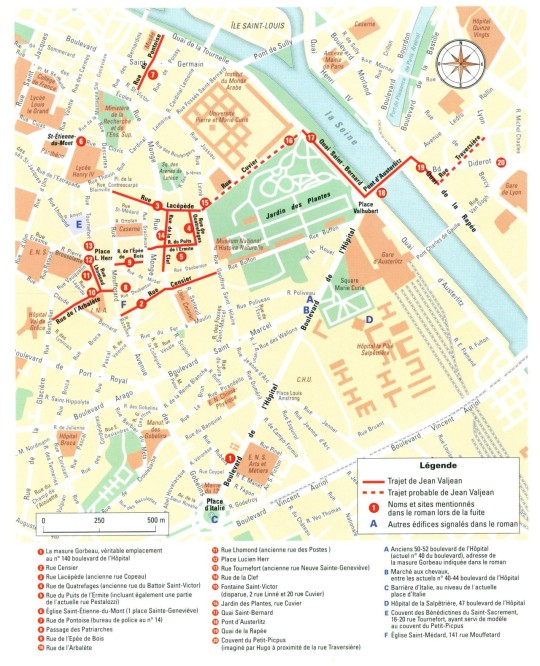
A quick overview: Jean Valjean starts in a slummy half-built suburban area. This area is highly associated with the King; the royal Jardin des Plantes is nearby, and King Louis XVIII often rides by in his carriage during the afternoons. After travelling down a bunch of streets, "zigzagging" back and forth, Jean Valjean decides to cross the Seine over the Bridge of Austerlitz (a bridge named after one of Napoleon's victories.) Then he reaches the areas of the city near the Faubourg Saint Antoine that are more associated with working class rebellion. From there he enters a dark isolated half-built medieval neighborhood near marshes and timberyards, with narrow mazey alleyways, that Hugo mostly made up. Hugo pretends this medieval neighborhood used to exist, but was destroyed like many others during the recent renovations. Now that we've gotten the overview out of the way, let's go more specific!
The chase starts out in "the old quarter of the Marche aux Chevaux." At the time, this was a less inhabited and poorer area of Paris; it's described as basically a slum. Here are some of Marville's photographs :

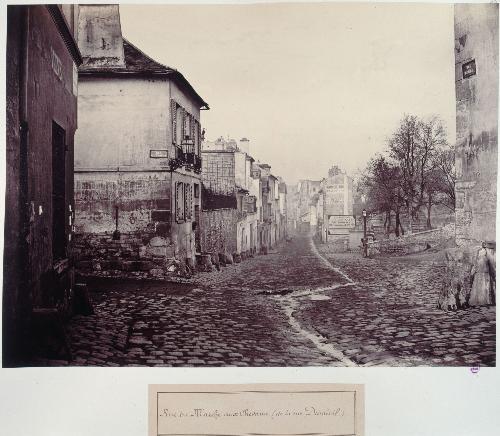
Then we're told "Jean Valjean described many and varied labyrinths in the Mouffetard quarter, which was already asleep, as though the discipline of the Middle Ages and the yoke of the curfew still existed. He combined in various manners, with cunning strategy, the Rue Censier:"
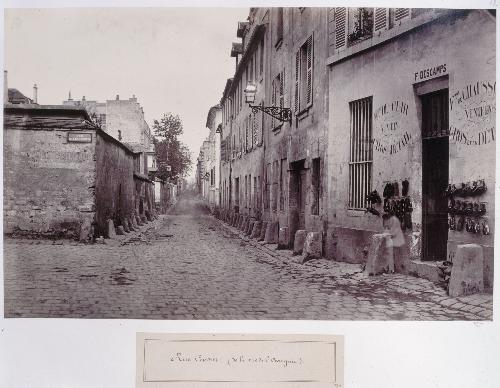
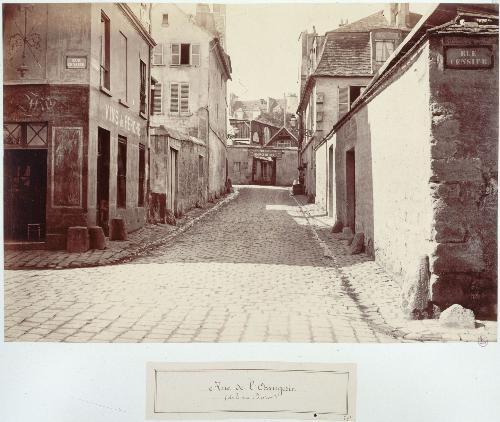


"and the Rue Copeau," (according to the map I linked earlier, the Rue Copeau is now the Rue Lacepede. Here is Marville's pic:)

"the Rue du Battoir-Saint-Victor and the Rue du Puits l’Ermite. There are lodging houses in this locality, but he did not even enter one, finding nothing which suited him. He had no doubt that if any one had chanced to be upon his track, they would have lost it."
"As eleven o’clock struck from Saint-Étienne-du-Mont:" (note: this refers to the church of Saint-Etienne)

"he was traversing the Rue de Pontoise, in front of the office of the commissary of police, situated at No. 14." (Jean Valjean sees Javert and the police following him on this street, because they're visible in the light of the lantern from the police station.)
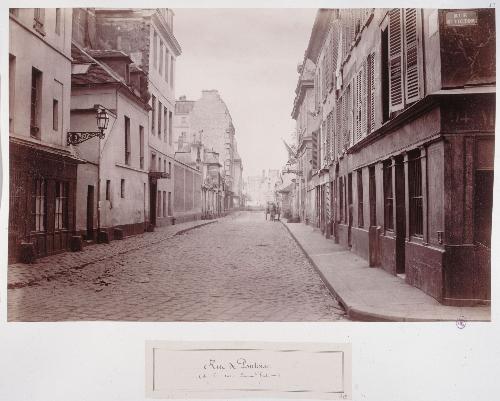
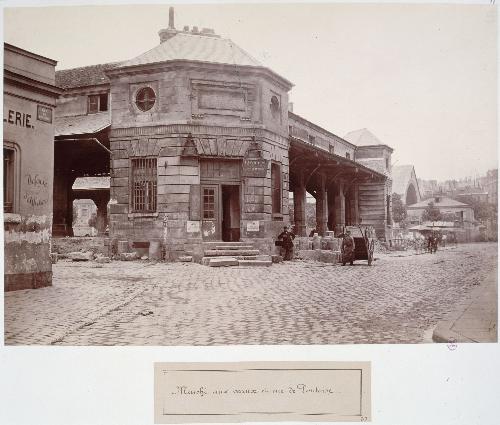
"He took a circuit, turned into the Passage des Patriarches, which was closed on account of the hour,"
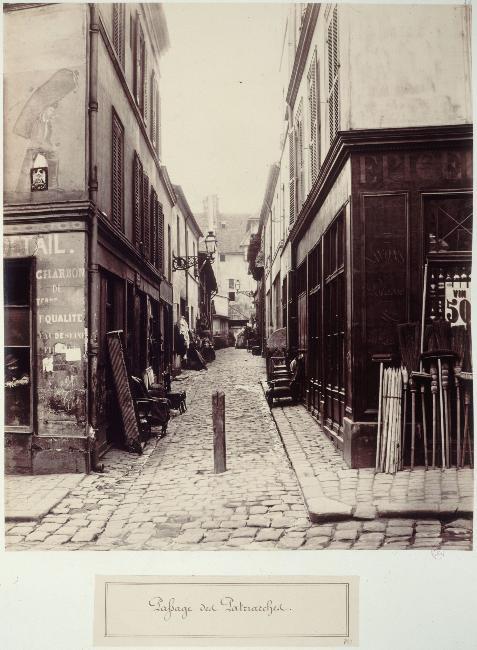
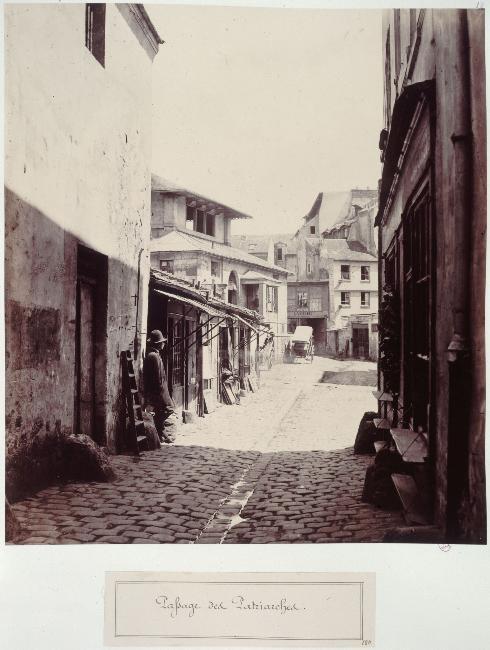
"strode along the Rue de l’Épée-de-Bois

and the Rue de l’Arbalète, and plunged into the Rue des Postes."




"At that time there was a square formed by the intersection of streets, where the College Rollin stands to-day, and where the Rue Neuve-Sainte-Geneviève turns off." (Note: these streets are labeled Montagne-Sainte-Geneviève, but not Neuve-Sainte-Geneviève, so they may be different streets! But I'm putting them here anyway.)
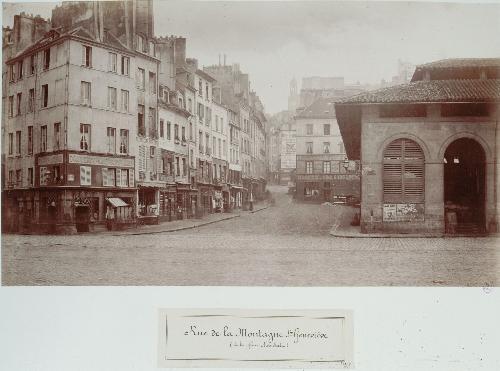


"It is understood, of course, that the Rue Neuve-Sainte-Geneviève is an old street, and that a posting-chaise does not pass through the Rue des Postes once in ten years. In the thirteenth century this Rue des Postes was inhabited by potters, and its real name is Rue des Pots." (Annotation: Hugo's bein silly and making little puns. He's snarkily pointing out the "new saint-genevieve street" is old, and the post street rarely has post-chaises/carriages go through it.)
(Jean Valjean hides in the shadows and watches to see who shows up in this big square intersection of streets. In the moonlight, he recognizes Javert.)
"He slipped from under the gate where he had concealed himself, and went down the Rue des Postes (which I shared a picture of previously), towards the region of the Jardin des Plantes." (Note: the Jardin des Plantes is a royal garden. Here is a modern photo from Wikipedia.)

"He left behind him the Rue de la Clef,

"then the Fountain Saint-Victor, skirted the Jardin des Plantes by the lower streets, and reached the quay. There he turned round. The quay was deserted. The streets were deserted. There was no one behind him. He drew a long breath.
He gained the Pont d’Austerlitz."
(The Pont d'Austerlitz, named after Napoleon's victory at the battle of Austerlitz, is a very famous bridge. Marville has no photographs but here's an 1830 engraving:)

"The bridge once crossed, he perceived some timber-yards on his right. He directed his course thither. In order to reach them, it was necessary to risk himself in a tolerably large unsheltered and illuminated space. He did not hesitate. Those who were on his track had evidently lost the scent, and Jean Valjean believed himself to be out of danger. Hunted, yes; followed, no."
Here's the quai by the pont-au-change-- a different quai, but gives you an idea of what the areas around the Seine often looked like.
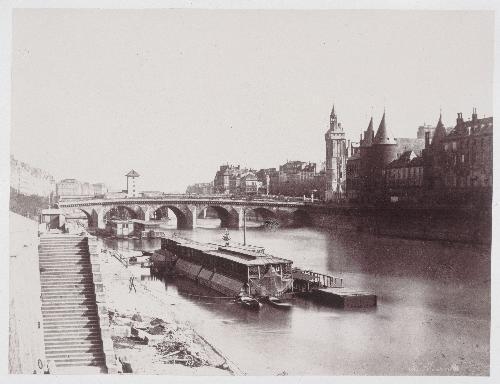
(Then Jean Valjean sees Javert and the other police on the Bridge of Austerlitz, following him. He hurries towards the darker alleys of the city.)
"A little street, the Rue du Chemin-Vert-Saint-Antoine, opened out between two timber-yards enclosed in walls. This street was dark and narrow and seemed made expressly for him."
Here's an abandoned timber-yard-ish looking picture:

But Marville has no photographs of this street. I'd have to double check, but iirc this is the part where Hugo starts to 'make up' more street layouts. I wouldn't be surprised if this street really WAS made expressly for him (meaning Hugo made it up.)
"The point of Paris where Jean Valjean found himself, situated between the Faubourg Saint-Antoine and la Râpée, is one of those which recent improvements have transformed from top to bottom,—resulting in disfigurement according to some, and in a transfiguration according to others. The market-gardens, the timber-yards, and the old buildings have been effaced. To-day, there are brand-new, wide streets, arenas, circuses, hippodromes, railway stations, and a prison, Mazas, there; progress, as the reader sees, with its antidote."
(Here Hugo talks about the Haussman renovations directly, claiming that if his street layouts are "inaccurate" it's because these are some of the Old Medieval Streets that were razed during Paris's recent renovations. He goes on for a while comparing Petit-Picpus to various other areas that were changed during the renovations.)
"Le Petit-Picpus, which, moreover, hardly ever had any existence, and never was more than the outline of a quarter, had nearly the monkish aspect of a Spanish town. The roads were not much paved; the streets were not much built up. (....) Such was this quarter in the last century. The Revolution snubbed it soundly. The republican government demolished and cut through it. Rubbish shoots were established there. Thirty years ago, this quarter was disappearing under the erasing process of new buildings. To-day, it has been utterly blotted out."
The Petit-Picpus, of which no existing plan has preserved a trace, is indicated with sufficient clearness in the plan of 1727, published at Paris by Denis Thierry, Rue Saint-Jacques, opposite the Rue du Plâtre;

and at Lyons, by Jean Girin, Rue Mercière, at the sign of Prudence.
Petit-Picpus had, as we have just mentioned, a Y of streets, formed by the Rue du Chemin-Vert-Saint-Antoine, which spread out in two branches, taking on the left the name of Little Picpus Street, and on the right the name of the Rue Polonceau. The two limbs of the Y were connected at the apex as by a bar; this bar was called Rue Droit-Mur.
The Rue Polonceau ended there; Rue Petit-Picpus passed on, and ascended towards the Lenoir market. A person coming from the Seine reached the extremity of the Rue Polonceau, and had on his right the Rue Droit-Mur, turning abruptly at a right angle, in front of him the wall of that street, and on his right a truncated prolongation of the Rue Droit-Mur, which had no issue and was called the Cul-de-Sac Genrot."
Here is @everyonewasabird's attempt to puzzle this out:

It was here that Jean Valjean stood."
Then Jean Valjean escapes by pulling down an old oil lantern, strung up by ropes. Hugo notes that this would have been "impossible if the streets were lit with gas, the way they would be after the renovations. This picture shows an old oil lamp strung up by ropes:

Finally, Jean Valjean climbs over the wall into the Petit-Picpus convent. This convent is fictional. Hugo pretends it used to exists but is no longer around-- another relic of the early 19th century that has been lost over time.
TLDR:
Jean Valjean's escape through Paris is Hugo way of mourning the Paris he knew from before his exile, the Paris before the modern renovations. To quote Volume 2 Book 5 Chapter 1:
The author of this book, who regrets the necessity of mentioning himself, has been absent from Paris for many years. Paris has been transformed since he quitted it. A new city has arisen, which is, after a fashion, unknown to him. There is no need for him to say that he loves Paris: Paris is his mind’s natal city. In consequence of demolitions and reconstructions, the Paris of his youth, that Paris which he bore away religiously in his memory, is now a Paris of days gone by. He must be permitted to speak of that Paris as though it still existed. It is possible that when the author conducts his readers to a spot and says, “In such a street there stands such and such a house,” neither street nor house will any longer exist in that locality. Readers may verify the facts if they care to take the trouble. For his own part, he is unacquainted with the new Paris, and he writes with the old Paris before his eyes in an illusion which is precious to him. It is a delight to him to dream that there still lingers behind him something of that which he beheld when he was in his own country, and that all has not vanished. So long as you go and come in your native land, you imagine that those streets are a matter of indifference to you; that those windows, those roofs, and those doors are nothing to you; that those walls are strangers to you; that those trees are merely the first encountered haphazard; that those houses, which you do not enter, are useless to you; that the pavements which you tread are merely stones. Later on, when you are no longer there, you perceive that the streets are dear to you; that you miss those roofs, those doors; and that those walls are necessary to you, those trees are well beloved by you; that you entered those houses which you never entered, every day, and that you have left a part of your heart, of your blood, of your soul, in those pavements. All those places which you no longer behold, which you may never behold again, perchance, and whose memory you have cherished, take on a melancholy charm, recur to your mind with the melancholy of an apparition, make the holy land visible to you, and are, so to speak, the very form of France, and you love them; and you call them up as they are, as they were, and you persist in this, and you will submit to no change: for you are attached to the figure of your fatherland as to the face of your mother.
159 notes
·
View notes
Text
Victor Hugo: not relevant but there is an urgent need for a close-up shot of Enjolras.
Text was copied and pasted from wikisource.
3.4.1, introduction paragraph
Woe to the love-affair which should have risked itself beside him! If any grisette of the Place Cambrai or the Rue Saint-Jean-de-Beauvais, seeing that face of a youth escaped from college, that page's mien, those long, golden lashes, those blue eyes, that hair billowing in the wind, those rosy cheeks, those fresh lips, those exquisite teeth, had conceived an appetite for that complete aurora, and had tried her beauty on Enjolras…
Poor Enj, walks on the street and gets harassed by random passers-by.
Also Victor Hugo, next paragraph: now let’s talk about Combeferre, “He was less lofty, but broader. That’s all. Thank you.”
Enjolras, the believer, disdained this sceptic; and, a sober man himself, scorned this drunkard. He accorded him a little lofty pity. Grantaire was an unaccepted Pylades. Always harshly treated by Enjolras, roughly repulsed, rejected yet ever returning to the charge, he said of Enjolras: "What fine marble!"
Grantaire, are you sure you are there for Enjolras’s faith and (chaste, healthy, firm, upright, hard, candid) nature NOT FOR HIS FACE???
3.4.5, Combeferre’s être-libre big show
Enjolras, whose blue eye was not fixed on anyone, and who seemed to be gazing at space, replied, without glancing at Marius:
Thanks, Victor, for reminding us of something you said four chapters ago.
4.12.3, basically Grantaire’s love confession
Enjolras, who was standing on the crest of the barricade, gun in hand, raised his beautiful, austere face. Enjolras, as the reader knows, had something of the Spartan and of the Puritan in his composition.
Maybe the reader also knows Enjolras has a beautiful and austere face.
4.12.7, Javert’s identity is discovered.
"Spy," said the handsome Enjolras, "we are judges and not assassins."
Javert: …Why?
4.12.8, Le Cabuc’s execution
Enjolras, pale, with bare neck and dishevelled hair, and his woman's face, had about him at that moment something of the antique Themis…
Victor Hugo: I know one minute ago you were not doing anything intense, merely talking to Javert, but now I need you to cosplay Themis, so please get rid of your cravat and dishevel your (beautiful, golden, shining) hair.
Enjolras: …okay.
His dilated nostrils, his downcast eyes, gave to his implacable Greek profile that expression of wrath and that expression of Chastity which, as the ancient world viewed the matter, befit Justice.
Victor Hugo: Killing in the name of justice can easily get us into endless and heated ethical debates, and the issue is further complicated by the very situation, given it is a revolution, where a judicial system has not really been established. Let’s not get into deep water but make our life easier: this is divine justice.
Le Cabuc attempted to resist, but he seemed to have been seized by a superhuman hand.
Le Cabuc: I am armed, and I am evil and impetuous enough to murder someone without a second thought. Am I not supposed to fight this schoolboy?
Victor Hugo: No. You are supposed to be shocked by his beauty. And chastity.
Le Cabuc: Is that something I can tell by LOOKING AT HIM?
Enjolras ceased. His virgin lips closed; and he remained for some time standing on the spot where he had shed blood, in marble immobility.
Marble x2.
Jean Prouvaire and Combeferre pressed each other's hands silently, and, leaning against each other in an angle of the barricade, they watched with an admiration in which there was some compassion, that grave young man, executioner and priest, composed of light, like crystal, and also of rock.
5.1.3
Enjolras reappeared. He returned from his sombre eagle flight into outer darkness. He listened for a moment to all this joy with folded arms, and one hand on his mouth. Then, fresh and rosy in the growing whiteness of the dawn, he said:
…He literally says hey guys, we are going to die now.
Victor Hugo: Yeah I know. But light technician, light on Enjolras please!
5.1.5 barricade speech.
All at once he threw back his head, his blond locks fell back like those of an angel on the sombre quadriga made of stars, they were like the mane of a startled lion in the flaming of a halo, and Enjolras cried…
How can Victor Hugo forget to highlight his revolutionary gold boy’s beauty?
Enjolras paused rather than became silent; his lips continued to move silently, as though he were talking to himself, which caused them all to gaze attentively at him, in the endeavor to hear more. There was no applause; but they whispered together for a long time. Speech being a breath, the rustling of intelligences resembles the rustling of leaves.
No virgin lip this time. Good thing that Victor is learning self-restraint (but not for long, apparently).
5.1.8 the death of sergeant of artillery
And a tear trickled slowly down Enjolras' marble cheek.
Marble x3.
Victor you are using Grantaire’s vocabulary.
5.1.23 the martyrdom of Enjolras
The audacity of a fine death always affects men. As soon as Enjolras folded his arms and accepted his end, the din of strife ceased in the room, and this chaos suddenly stilled into a sort of sepulchral solemnity. The menacing majesty of Enjolras disarmed and motionless, appeared to oppress this tumult, and this young man, haughty, bloody, and charming, who alone had not a wound, who was as indifferent as an invulnerable being, seemed, by the authority of his tranquil glance, to constrain this sinister rabble to kill him respectfully. His beauty, at that moment augmented by his pride, was resplendent, and he was fresh and rosy after the fearful four and twenty hours which had just elapsed, as though he could no more be fatigued than wounded.
(The most obvious evidence that this guy is divine. Human biology DOES NOT work in this way.)
It was of him, possibly, that a witness spoke afterwards, before the council of war: "There was an insurgent whom I heard called Apollo."
Were you at the barricade for the revolution or for something (someone) else???
A National Guardsman who had taken aim at Enjolras, lowered his gun, saying: "It seems to me that I am about to shoot a flower."
Le Cabuc symptom: brain stops functioning properly at the sight of Enjolras’s beauty.
Noise does not rouse a drunken man; silence awakens him. The fall of everything around him only augmented Grantaire's prostration; the crumbling of all things was his lullaby. The sort of halt which the tumult underwent in the presence of Enjolras was a shock to this heavy slumber. It had the effect of a carriage going at full speed, which suddenly comes to a dead stop. The persons dozing within it wake up.
Now we have music fading into a suffocating silence, light focuses on Enjolras, twelve guns arranged in a way according to the rules of one-point perspective. Your turn Grantaire!
102 notes
·
View notes
Text

Victor Hugo was literally insane for this chapter
like....the amount of quotes that could have been lifted straight from (good) fanfiction.....
Upon what should he decide? One sole resource remained to him; to return in all haste to the Rue de l’Homme Armé, and commit Jean Valjean to prison. It was clear that that was what he ought to do. He could not.
Something barred his way in that direction.
Something? What?
Something??? What? HMM I DUNNO JAVERT WHAT IS THAT SPECIAL SOMETHING
Jean Valjean was the load which weighed upon his spirit.
Jean Valjean disconcerted him. All the axioms which had served him as points of support all his life long, had crumbled away in the presence of this man.
I may as well just bold that whole paragraph like are you serious with this Victor
Certainly, and we insist upon this point, he had not yielded without resistance to that monster, to that infamous angel, to that hideous hero, who enraged almost as much as he amazed him. Twenty times, as he sat in that carriage face to face with Jean Valjean, the legal tiger had roared within him. A score of times he had been tempted to fling himself upon Jean Valjean, to seize him and devour him, that is to say, to arrest him.
Much has been made of 'seize him and devour him' and rightfully so, but literally the whole paragraph is so horny. Calling Valjean a monster and an angel in the same sentence? Literally enumerating the exact number of times (twenty!) he thought about 'flinging himself upon' Valjean?!
How had he come to such a pass? How had all this happened? He could not have told himself. He clasped his head in both hands, but in spite of all that he could do, he could not contrive to explain it to himself.
No further comment, just love that he literally has his head in his hands
All sorts of interrogation points flashed before his eyes. He put questions to himself, and made replies to himself, and his replies frightened him. He asked himself: “What has that convict done, that desperate fellow, whom I have pursued even to persecution, and who has had me under his foot, and who could have avenged himself, and who owed it both to his rancor and to his safety, in leaving me my life, in showing mercy upon me? His duty? No. Something more. And I in showing mercy upon him in my turn—what have I done? My duty? No. Something more. So there is something beyond duty?”
SOMETHING MORE
A terrible situation! to be touched.
To be granite and to doubt! to be the statue of Chastisement cast in one piece in the mould of the law, and suddenly to become aware of the fact that one cherishes beneath one’s breast of bronze something absurd and disobedient which almost resembles a heart! To come to the pass of returning good for good, although one has said to oneself up to that day that that good is evil! to be the watch-dog, and to lick the intruder’s hand! to be ice and melt! to be the pincers and to turn into a hand! to suddenly feel one’s fingers opening! to relax one’s grip,—what a terrible thing!
I Can't Believe It's Not Fanfiction!!!! this is literally what Victor wrote I'm losing my mind!!!!!
#nobody ships it harder than hugo#and as the keeper of kawaii victor hugo i am entitled to say so#javert derailed#lm 5.4.1#javert#the brick#the brick quotes#valvert#les mis#les miserables#les misérables#les mis letters#victor hugo#sylvie's own nonsense
123 notes
·
View notes
Text
Les prépositions
A
À - to (je vais à la plage - I’m going to the beach), at (le chat est à la maison - the cat is at the house), indirect object/complément d’attribution (c’est au chat - it’s the cat's), adverbial phrase of way (une peinture à l’huile - an oil painting), adverbial locution introducer (à l’instant - just now), price indicator (le kilo de pommes est à deux euros), infinitive form introducer (c’est à prendre ou à laisser - take it or leave it), approximation introducer (c’est à dix minutes d’ici - it’s about ten min. away), against (dos à dos), after (pas à pas), until (aimer à la folie)
Après - after (je te rejoins après le travail - I’ll join you after work)
Avant - before (je me suis levée avant toi - I got up before you did)
Avec - with (je vis avec mes deux chats - I live with my two cats)
C
Chez - at X’s > person or brand of a shop (je suis chez mon père - I'm at dad's)
Concernant - regarding, about (concernant ton offre, je la refuse - about your offer, I'm refusing it)
Contre - against (je suis contre ta décision - I stand against your decision, le chat est assis contre le mur - the cat is sitting against the wall)
D
Dans - in (le chat est dans mon sac - the cat is in my bag)
D’après - according to (d’après Victor Hugo, Fantine est blonde)
De - of (au bout de la rue - at the end of the street)
Dedans - inside of it (le chat est dedans - the cat is inside of it)
Dehors - outside (le chat est dehors - the cat is outside)
Depuis - since (j'ai mon chat depuis que j'ai dix ans - I've had my cat since I was 10), from (tout était beau, depuis la décoration jusqu’aux couleurs - everything was lovely, from the decoration to the colours)
Derrière - behind (le chat est derrière toi - the cat is behind you)
Dès - as soon as (je te préviens dès que j’arrive - I’ll let you know as soon as I get there), immediately (si je pouvais, je partirais dès maintenant)
Dessous - under (la clé était dessous le lit - the key was under the bed)
Dessus - on (le chat est assis dessus - the cat is sitting on it),
Devant - in front of (j’attends devant la maison - I’m waiting in front of the house)
Durant - during (il est mort durant la famine - he died during the famine), for (elle a vécu là-bas durant des années - she lived there for years)
E
En - at (je suis nul en Français - I’m bad at French), material indicator (une table en bois - a wooden table), change indicator (il s’est transformé en papillon - it turned into a butterfly), division mood (couper en deux - cut in two pieces), during (en hiver, j’ai toujours un rhume - during the winter season, I always get a cold), gerundive element (elle tomba en criant - she fell, screaming), shape/appearance indicator (un arbre en fleurs - a blossoming tree)
Entre - between/out of (entre tous les garçons, Louis est le plus grand - out of all of the boys, Louis is the tallest)
Envers - towards/to (il est méchant envers elle - he’s mean to her)
Ès - in (licencié-e ès sciences - bachelor of sciences) - rare, uni titles
Excepté(e/s) - except (exceptée Louise, elles sont toutes arrivées)
H
Hormis - except (hormis Pierre, nous avons tous le permis - except from Pierre, we all have a driving license)
Hors - out of (il est hors de lui - he’s beside himself)
J
Jusque/jusqu’à (+ subjunctive) - until (il a miaulé jusqu'à ce que je le nourrisse - he meowed until I fed him)
M
Malgré - despite (il est venu malgré sa grippe - he came despite his flu)
Moyennant - in exchange for (moyennant un changement de ton, tu pourras rester - If you change your tone, you’ll be allowed to stay) - rare
N
Nonobstant - in spite of (”Charles Myriel, nonobstant ce mariage, avait, disait-on, beaucoup fait parler de lui” Les Misérables) - rare/old
O
Ôté - taken of from (6 ôté de 10 égale 4)
Outre - besides (outre mes deux cats, il n'y a personne chez moi - outside of my cats, there's no one at my house)
P
Par - by (la Joconde a été painte par Léonard de Vinci), direction indicator (il est parti par là - he went that way), with (je commence par une entrée - I start with an entree), per (j’en prends trois par jour - I take three per days)
Parmi - amongst (parmi mes chats, c'est le plus petit - he’s my smallest cat)
Passé - after/past (passé 2h, tout est fermé - past 2AM, everything is closed)
Pendant - during (je t’appellerai pendant ma pause - I’ll call you during my break)
Pour - for (je suis là pour toi - I’m here for you), to (je pars pour Paris - I’m heading to Paris), according to (pour moi, c'est une erreur - I think it's a mistake)
Près (de) - near (je suis près de Paris - I’m near Paris)
S
Sans - without (je suis sans voix - I am speechless)
Sauf - except (j’aime tout sauf la pluie - I like everything but rain)
Selon - according to (selon moi, tu as tort - in my opinion, you’re wrong)
Sous - under (le chat est sous la table - the cat is under the table)
Suivant - according to (suivant ce que j’ai entendu, il ne reviendra pas - according to what I’ve heard, he won’t come back)
Sur - on (le chat est sur la table - the cat is on the table), about (c’est un film sur la guerre - it’s a movie about the war), towards (regarde sur ta droite - look on your right), out of (deux fois sur trois il est en retard - two out of three times he's late)
V
Vers - towards (elle avance vers moi - she’s coming towards me), somewhere around (elle habite vers l’église - she lives near the church), about (Elle est rentrée vers minuit - she got home around midnight)
Voici - here is/are (voici mon chat - here’s my cat)
Voilà - there is/are (et voilà les miens - and there are mine), it’s been (voilà deux ans que je ne les avais pas vues - it had been two years since I last saw them)
Vu - given (vu la situation, c’est mieux comme ça - given the circumstances, that’s better that way) - casual

Movie: La Chinoise - Jean-Paul Godard, 1967
475 notes
·
View notes
Text
In this chapter, two things unfold: Hugo continues to flaunt his impeccable, nearly native knowledge of the sewers, and Jean Valjean carries on with his cross – Marius.
There’s really A LOT of infodumping about the sewers: detailed topography, street names, measurements, dead-ends, and exit information. Yes, Victor, it's impressive, but it's becoming somewhat redundant. Additionally, Hugo heightens the pressure in Valjean’s predicament by describing the dangers he would have faced if he had chosen an alternative route.
Once again, I'm moved and surprised by the way Valjean treats Marius. Hugo employs straightforward religious symbolism, comparing Valjean to Jesus, sacrificing himself for the good of others. However, Jesus wasn't expected to be gentle with his cross; he could have simply hated it. Valjean, though still harbouring hatred toward Marius (here: “in that half light, he gazed at him with inexpressible hatred”), paradoxically, handles him with care and tenderness, as if Marius were some precious and delicate being. Valjean ensures Marius isn't hurt further, holds him in such a way that “his chest was not oppressed,” checks his heartbeat, and uses his torn shirt to bandage Marius’ wound. Poor Valjean.
It now makes sense why Marius bought a roll and didn't eat it, allowing Valjean to find it in his pocket and consume it, so that “his strength had returned to him” and he could carry on his way to the Calvary (oh! Isn’t it an amazing coincidence that Marius’ grandfather’s address is Rue des Filles-du-Calvaire!) And let’s not even mention what this roll’s been through before it was eaten by Valjean. Both he and Marius seem miraculously immune to infections thriving in the filth of the sewers.
38 notes
·
View notes
Text
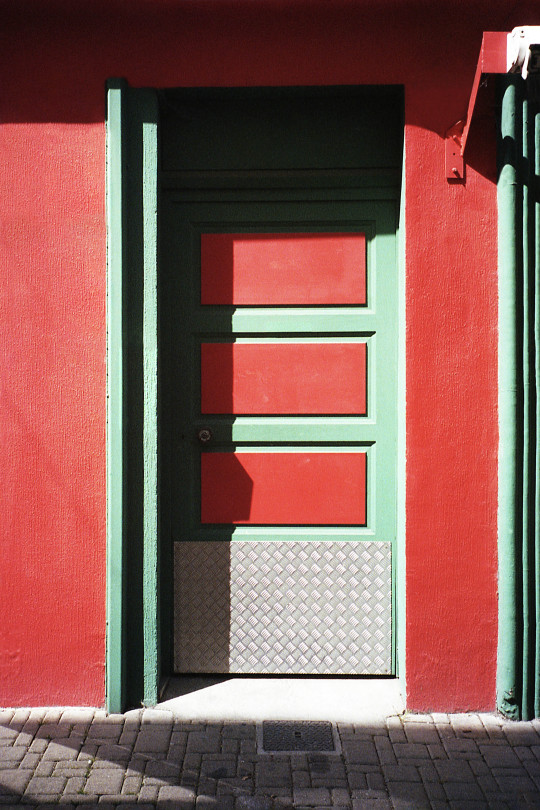
Les couleurs de la ville.
#photographie urbaine#urban photography#couleurs urbaines#urban colors#porte#door#ombre#shadow#argentique#analog photography#rollei prego 125#kodak portra 400#rue victor hugo#38300#bourgoin jallieu#isère#auvergne rhône alpes#france#photographers on tumblr#poltredlyon#lyonurb#brumpicts#frédéric brumby
252 notes
·
View notes
Text
Victor Hugo on Talleyrand's death
For @empirearchives who was interested, here's a translation of Victor Hugo's text about Talleyrand's death. My thanks to @microcosme11 for her help <33
Choses Vues, Victor Hugo
1838
Talleyrand
19th of May
In the Rue St-Florentin, there is a palace and a sewer.
The palace, with its noble, rich, and dull architecture, was long called "Hôtel de l'Infuntado"; today, we read on its front door: Hôtel Talleyrand. During the fourty years he lived on this street, the last host of this palace might never have set eyes on this sewer.
He was a stranged, feared, and considerable character: his name was Charles-Maurice de Périgord; he was noble as Machiavel, a priest like Gondi, defrocked like Fouché, witty as Voltaire, and lame as the devil. One could say that everything limped with him: the nobility which he had put to the service of the republic, the priesthood he had dragged on the Champ-de-Mars then threw down the drain, the marriage he had broken by twenty scandals and by a voluntary separation, the wit he dishonoured through vileness. This man, nevertheless, had grandeur.
The splendours of both regimes were mixed together inside of him: he was prince of the old kingdom of France, and prince of the French Empire.
For thirty years, from the depth of his palace, from the depth of his mind, he had just about led Europe. He had let the revolution call him "tu", and had smiled at it, ironically of course; but it had not noticed. He had approached, known, observed, pierced, stirred, upturned, delved into, mocked, intellectually fertilized all the men of his era, all the ideas of his century, and there had been a few minutes in his life when, holding in his hand the four or five fearsome threads that moved the civilized universe, he had had for a puppet Napoleon the First, Emperor of the French, King of Italy, Protector of the Confederation of the Rhine, Mediator of the Swiss Confederation. Such was the game this man played.
After the Revolution of July, that old race, whose grand chambellan he was, having fallen, he found himself standing on one foot and told the people of 1830, sitting, bare-armed, on a pile of cobbles: Make me your ambassador.
He had received Mirabeau's last confession and Thiers' first confidence. He had said himself he was a great poet and had made a trilogy in three dynasties: Act I, Buonaparte's Empire; Act 2, The House of Bourbon; Act 3, The House of Orleans.
He had done all of this in his palace, and, in this palace, like a spider in its web, he had attracted into it and taken successively heroes, thinkers, great men, conquerors, kings, princes, emperors, Bonaparte, Sieyès, Mme de Staël, Chateaubriand, Benjamin Constant, Alexander of Russia, Wilhelm of Prussia, Francis of Austria, Louis XVIII, Louis-Philippe, all the golden, shiny flies who buzzed in the history of those last fourty years. The whole sparkling swarm, fascinated by this man's deep eye, had successively passed under the dark door that bore, written on its architrave: Hôtel Talleyrand.
Well, the day before yesterday, 17 March, 1838, that man died. Doctors came and embalmed the corpse. For this, like the Egyptians, they first withdrew the bowels from the belly and the brain from the skull. Once done, after they had transformed the prince de Talleyrand into a mummy, and nailed this mummy in a white satin-lined coffin, they withdrew, leaving upon a table the brain, that brain which thought so many things, inspired so many men, built so many edifices, led two revolutions, fooled twenty kings, contained the world.
Once the doctors were gone, a valet entered, he saw what they had left. Hold on! they forgot this. What to do ? He remembered that there was a sewer in the street, he went there, and threw that brain into this sewer.
Finis rerum.
73 notes
·
View notes
Photo

Le Petit écho de la mode, no. 9, vol. 20, 27 février 1898, Paris. 1. Toque de tulle et toque de fleurs. Modèles de Mme Marchand, 96, avenue Victor-Hugo. Ville de Paris / Bibliothèque Forney
1. Toque drapée en tulle illusion, draperie et coques en velours, boucle en strass posée sur le côté, sous un chou.
2. Toque en fleurs et feuillage. Col en mousseline de soie blanche avec pans devant. (Modèle de la Maison Jeanne d’Arc, 203, rue Saint-Honoré.)
—
1. Toque draped in illusion tulle, velvet drapery and shells, rhinestone buckle placed on the side, under a cabbage.
2. Toque in flowers and foliage. White silk chiffon collar with panels in front.
#Le Petit écho de la mode#19th century#1890s#1898#periodical#fashion#fashion plate#cover#color#description#Forney#dress#hat#toque#collar#flowers#Modèles de chez#Madame Marchand
56 notes
·
View notes
Text
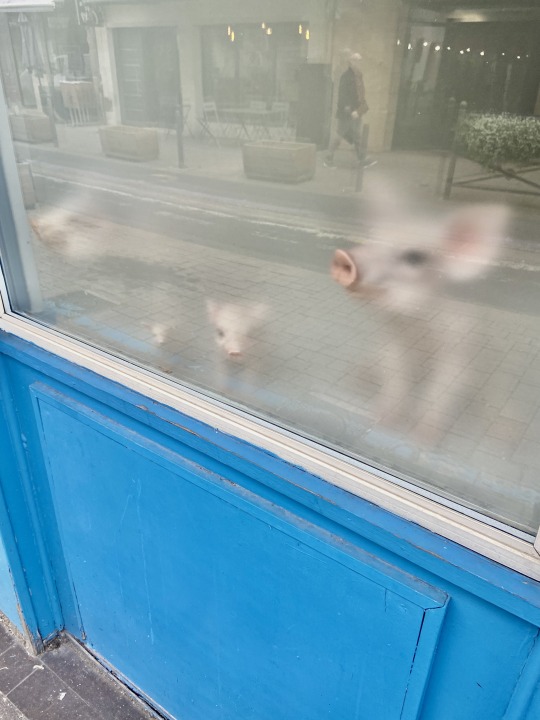
by unofficial wannabe
window confessions
somewhere in ste-foy with Rafa my hunting dog
——-
plastic piggies 🐷🐷🐷were…
peering from a vitrine…
on the rue de Victor Hugo…
Rafa adores…
jambon cuit dans la poêle…
sans moutarde SVP…
Rafa was dismayed…
we left without…
food treasure…
when we got home she sulked…
on the balcony…
surveying the neighborhood possiblities…
sur la rue de la libération…
#frenchpsychiatrymuderedmycnut#by unofficial#window confessions#somewhere in ste-foy with Rafa my hunting dog#plastic piggies 🐷🐷🐷were…#peering from a vitrine…#on the rue de Victor Hugo…#Rafa adores…#jambon cuit dans la poêle…#sans moutarde SVP…#Rafa was dismayed…#we left without…#food treasure…#when we got home she sulked…#on the balcony…#surveying the neighborhood and it’s parade…#sur la rue de la libération…
22 notes
·
View notes
Text
i found a very old edition of les mis on the internet that has alternate titles for the volumes-- maybe these were common at some point but i've never seen them before and i thought they were really interesting! so, from least to most delightful:
it calls part v "jean valjean; or the reformed convict" which is just like an accurate description of valjean
it calls part ii "cosette; or the detective's pursuit" which is slightly misleading as that part focuses more on valjean and cosette than javert, but it is (to the best of my memory i haven't read that volume in forever) the volume that javert features in the most
it calls part iv "saint-denis; or gavroche, the street boy of paris", which, first of all, who omits an awesome title like "the idyll in the rue plumet and the epic in the rue saint-denis" for that, secondly, gavroche is nowhere near the focus of that volume? part iii actually has an entire book about him and in part iv he's there, but lots of way more important things happen (sorry gavroche but it's true)
it calls part iii "marius; or the child of the revolution" which is FASCINATING. presumably, it's referring to marius being born during the napoleonic wars and shortly after the revolution (which has all kinds of parallels to victor hugo's own life and similar birth date). but it also could allude to marius being new to revolutionary ideals and therefore, a "child of the revolution" (which also mirrors hugo's life at the time of writing les mis). ALSO all the amis are young and new not to revolutionary ideals but to the very act of revolution, and they're essentially trying to be French Revolution Jr™️, making them, in their own way, children of the revolution.
it calls part i "fantine; or the felon and the fallen" which is just incredible. alliteration never fails folks.
178 notes
·
View notes
Text


An interesting letter from Paul Meurice and the rabbit holes it led me down
If you're bored and want something fun/french to read, consider reading the correspondence of Victor Hugo and Paul Meurice. You will find lots of interesting tidbits and really quite touching phrases. Here's a look at just one letter that caught my eye (the above portraits become semi-relevant later).
So the letter is undated but contextually, it's from early June 1862. Hugo, in Guernsey, was in close communication with Meurice, in Paris, over the final corrections for Les Miserables and the publication of its last volume. Meurice writes:
Javert Derailed, The Death of Gavroche, The Grandfather, The Passion in the Sewer, the whole drama, the whole volume, the whole poem is splendid. My word! I must straightforwardly decline to express my enthusiasm to you. I would need to have your prodigious execution and your incredible form in order to explain the depths of my feelings. My emotions and my admiration are inexpressable. I can’t understand Barbey d’Aurevilly.* I’ll tell you simply: it is sublime! I cried! You are greater than anyone, greater than yourself!
*The phrase is "Je jette ma langue aux Barbets d Aurevilly." This gave me some trouble to translate. I figured that he is using the expression jeter sa langue au chien (which I gather means something like "I can't guess at",) but replacing chien with barbet, a type of dog that sounds like Barbey, and also possibly making some sort of pun about d'Aurevilly's distinctive barbe (aka beard)? I really thought he might be making a pun about Barbey's 'barbs' (as in cruel remarks, since his reviews were very negative) but it doesn't seem like 'barb' has that meaning at all in French.]
Now bear in mind that in this next part, by "volume ten" he means the latter half of Jean Valjean, and by "these last four volumes," he means what we would call the last two, L'idylle rue Plumet, et l'epopee rue Saint-Denis and Jean Valjean
I have only read the first page of volume ten. We are very behind on the assembly, printing, and everything. Yet we will do everything so that it appears on the 30th.
And it was published the 30th! I don't remember rn what was causing the delays but it is surely mentioned in Bellos's book or in Leulliot's.
The effect and the success of these last four volumes will be immense. More irresistible and more unanimous than that of the other parts. Too irresistible and too unanimous from a certain point of view. It offends many people; some critics are cold, though they were well dispositioned before the book’s appearance. Don’t read into it, don’t hear things in these particular silences and particular reluctances: it can be felt, seen, and touched.
Fun to speculate about if Meurice was concerned about a particular person's silence (in which case, whose?) or if it was just in general. Hugo had expressed his frustration over the reception to both Vacquerie and even Jules Janin. I'd have to look over their correspondence again to see what Hugo said in particular to Meurice but he was surely aware of how Hugo felt.
OKAY now on to the subject of the portraits, Meurice tacks on this aside at the end of the letter:
I am writing this to you in haste, having let myself run late. Do you remember a portrait of you, full-length, but young, made some time ago by Deveria? The painting is excellent but why! I never knew you like this…This portrait would have belonged to a M. le marquis de Valori! If it is truly your portrait, it’s very strange. You should remember it then. You are seated on a red damas couch. White pants, a small redingote. You are blond, thin, elegant. The person who has it wishes to sell it. She’s asking for 250 francs. Would it amuse you to have it? They’ll want your response at the end of the week.
Of course when I read this I want to know what image he is talking about. I first thought of the image on the left (scroll back up)...the image on the left is a black and white photo of what is presumed to be a portrait of Victor Hugo at age 16 (I say presumed because that is literally how it is described on Wikipedia) (sometimes it is just described as Hugo as an adolescent) by Achille Devéria (although apparently it has been disputed which Devéria painted it?). The original was, supposedly, at some time in the collection of Prime Minister of France Louis Barthou. Where is it now? Perhaps it is in the private collection of Ms Taylor. Can we get a color photo of it? No. Swift.
So my mind went to this image because the subject is young, blond, possibly Victor Hugo, and possibly created by Devéria. However, it doesn't fit the rest of the description.
Then @pilferingapples kindly made me aware of the portrait on the right. From what I have found online, this one is attribution to Paul Gavarni, although the websites making that attribution are pretty sketch. The portrait was supposedly at one time in the possession of M. le D. F. Jousseaume, a bookstore owner. Where is it now? Also unknown.
(The provenance of both of these is kind of sketchy tbh. I checked three books about Hugo that I have which include images (Victor Hugo: A Tumultous Life by Samuel Edwards, Victor Hugo: A Biography by Graham Robb, and Victor Hugo: S'il n'en reste qu'un by Sophie Grossiord, a curator at the Maison Victor Hugo) and none of them include either of these images.)
Whatever the case, the image on the right fits the description in almost every way: it is full length (en pied), the subject is young, thin, there's the red seat, white pants, wearing a coat, and he's "blond" by french standards apparently (and consider that this photo may be a bad representation of the portrait). I haven't seen that image attributed to Deveria but it's possible (or possible that Meurice would believe it's possible.) Then there's the question of provenance. Why did M. le marquis de Valori have it and who was the woman selling it? My guess is that the man in question was Henri-Zozime de Valori, a writer who knew Nodier and who died in 1859. He had published a collection called Odes choisies: précédées d'un discours sur la poésie et les poetes lyriques anciens et modernes which was reviewed (by "S.") in Le Conservateur littéraire so he may have been aquianted with Hugo some way?
Anyways, evidently, Hugo didn't want the portrait because he never responded to that part of Meurice's letter and it eventually came into the hands of the bookseller D. F. Jousseaume. And where is it now? No idea! Okay, the end.
8 notes
·
View notes
